6 Best Durga Puja in Japan 2024
A typical saying is that a Durga Puja is just behind when three Bengalis are gathered. The celebration has crossed the seas to that multitude of continents. We found many Durga puja in Japan with the same charm as the Kolkata Durga puja.
The celebration is praised in over 150 spots across 36 nations, including India and Bangladesh. Mumbai, Pune, London, the UK, New York, New Jersey, Durga Puja in Australia and Switzerland are famous Durga puja places.
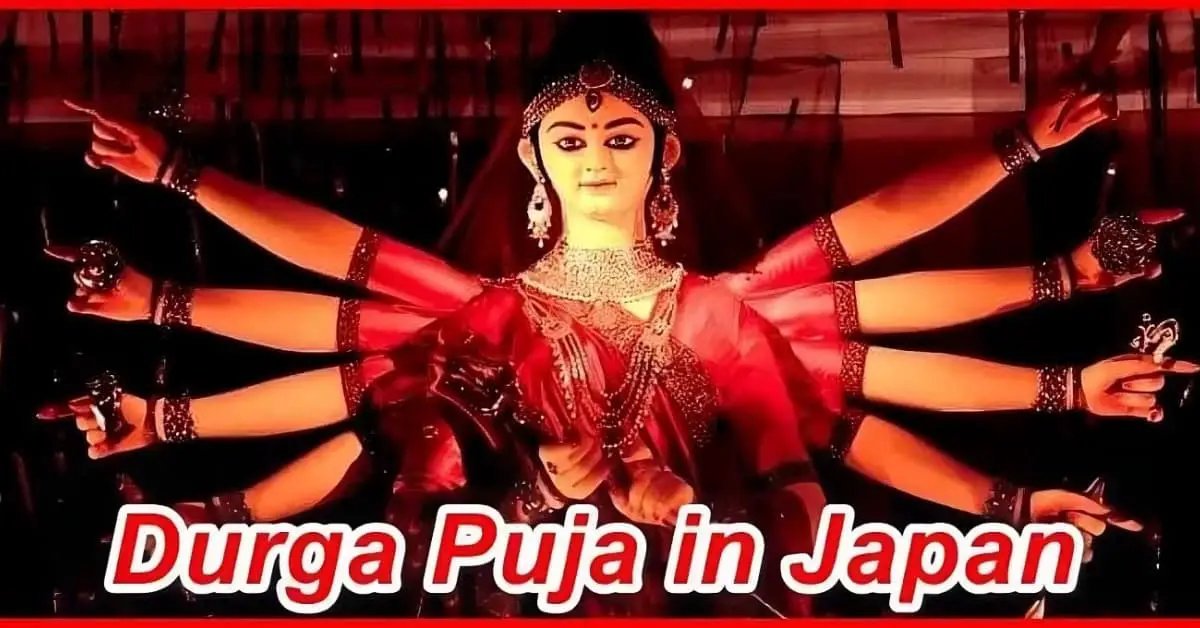
List of Top 6 Tokyo Japan Durga Puja Pandals
1. Indian (Bengal) Cultural Association (IBCA Japan)
This association was formed on the auspicious day of Saraswati Puja in 2011. This establishment has been open to cultural exchange between the Japanese and Bengali communities for over ten years.
It has taken active participation in the socio-economical well-being of both communities and encouraged collaboration. They are embracing different Indian communities under one wing.
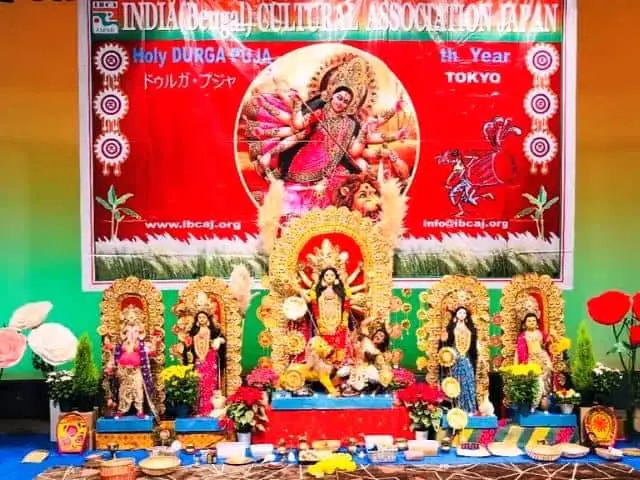
Currently, Mr. Naba Ghosh is the president of this association. Since 2011, they have performed puja and cultural festivals during Durga puja. People from different Indian and Japanese communities are welcomed here.
- Location: Morishita Cultural Center, Koto-Ku, Tokyo.
Read Naktala Udayan Sangha Durga Puja
2. Bengali Association of Tokyo Japan (BATJ)
BATJ is one of the oldest Bengali communities in Japan. A small group of Bengali people started this association in the early 1980s when the financial and social exchange between Indian and Japanese communities was still in minimal condition.
The association started as a small group and, with time, became a strong one in the 1990s. They started Durga Puja in 1990, besides other Bengali festivals. In 1997, they published their first annual cultural magazine Anjali during Durga puja.
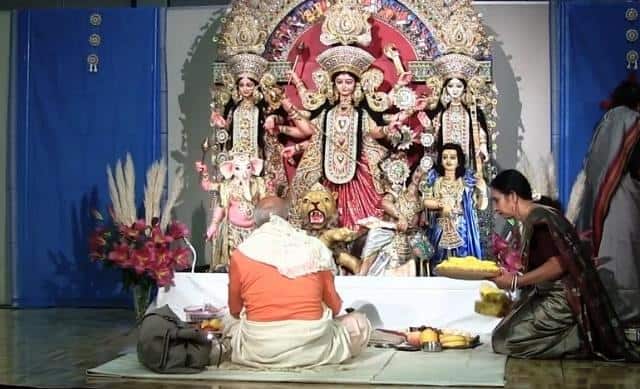
The current president of this organization is Mr. Syamal Kar. Their 32nd Durga puja of 2021 was commemorated with the publication of the 26th edition of their cultural magazine Anjali in PIO Hall in Ota-ku.
- Location: Ota City Industrial Plaza (PiO), 4th Floor Convention Hall, 1-20-20 Minami, Kamata, Ota-ku, Tokyo 144-0035
Read Durga Puja Near Me
3. Bengali Indian Community of Japan (BICJ)
As one of the oldest Bengali communities in Japan, they have performed Durga Puja for two decades. Besides Bengali and Hindu cultural events, they organize community events like New Year parties, birthday parties, and competitions for kids. The community is based in Kawaguchi, Saitama, Japan. Mr. Debotosh Biswas is the president of this association. But the puja is closed this year.
Address: 332-0031, Saitama Ken, Kawaguchi-Shi, Aoki 2-5-32, Royal Corp. Room-503, Japan
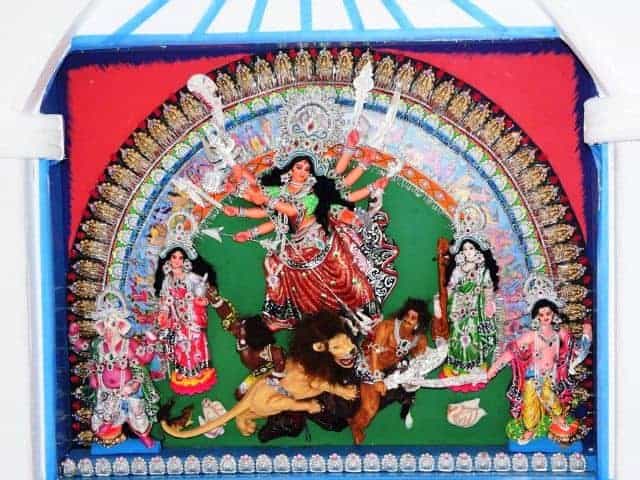
Read Best Durga Puja in the UK
4. Universal Puja Committee Japan
It’s another Bengali community in Japan performing the Durga puja since 1996. Starting as a small group, this community has emerged as one of Tokyo, Japan’s oldest and most popular communities.
Every year, many people from both Indian and Japanese communities come to visit this association during the Durga Puja and Saraswati Puja. Mr. Sunil Roy is the current president of this community.
- Address: Sumida Lifelong Learning Centre
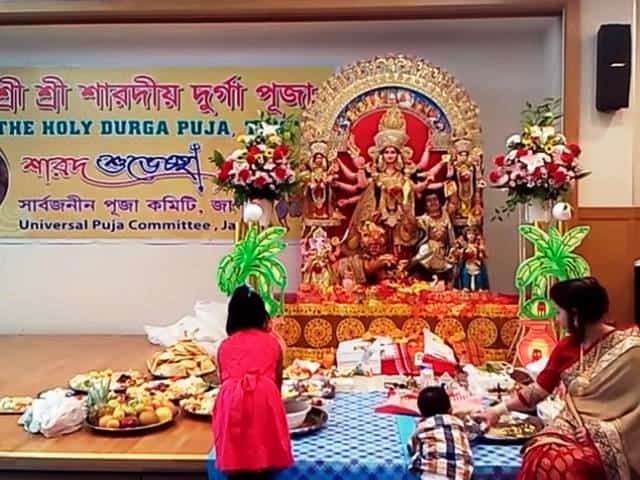
5. Kolkata Cultural Society Japan
This unique community is the youngest Bengali community in Japan. Based in Kawaguchi and Tokyo, this community was formed mainly by Bengali students in 2006.
After the grand success of the 2007 Saraswati Puja, they started to celebrate different Bengali occasions. Finally, in 2012, they celebrated their first Durga Puja.
- Address: Kawaguchi lizuka 2-3-3, 2-3-3 Iizuka, Kawaguchi City
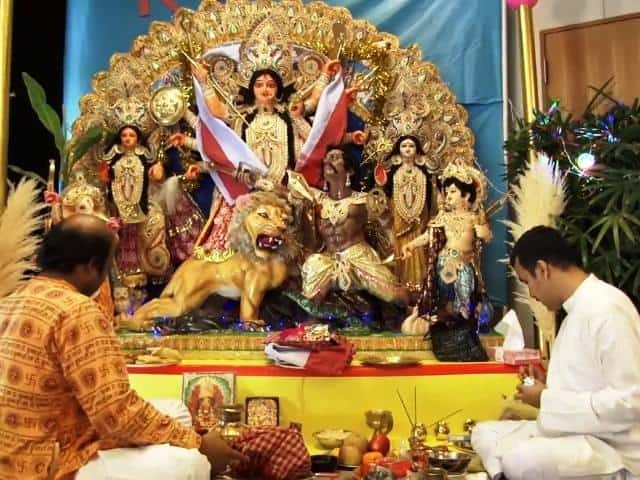
6. Durga Puja in Japanese Buddhism Culture
Japanese Buddhism has many similarities with the Indian Hindu religion. There are deities in Japanese culture who are similar to Hindu culture. Like goddess Durga has become Juntei Kannon Bosatsu, Lord Shiva is Daikokuten.
Besides this change, in Japanese Buddhism, Laksmi is worshipped as Kichijoten, Saraswati as Benzaiten, Lord Ganesh as Kangiten, and Lord Kartikeya as Idaten. However, the significance has changed.
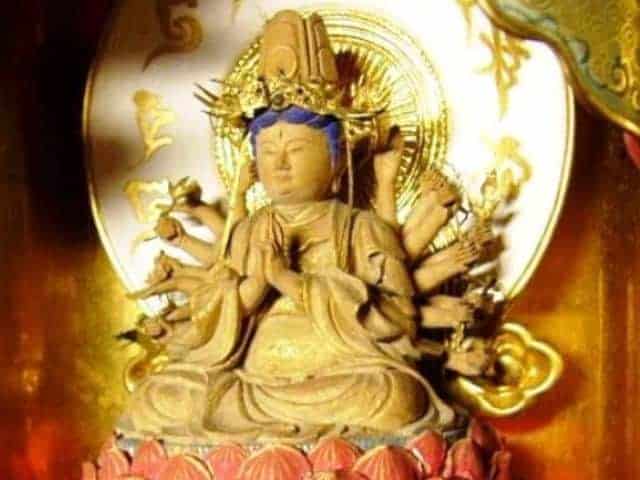
About Japan Durga Puja
In Japan, a leave of absence for religious activities is strictly prohibited. So they cannot perform this 5-day long occasion. The total program is minimized in a 1-day celebration, performed on the weekend before, during, or after these five days. It makes it easier as most of them have holidays on the weekend.
During this celebration, all Bengalis become single-family converged by their common interest in traditional Bengali culture, clothing, and cooking. This festival can immensely unite people from different socio-financial stature in all neighbourhoods.
Everyone gathers during this festival to pray for their well-being to the supreme mother goddess and appreciate the craftsmanship and culture of the society.
Read Different Types of Tourism
What is Durga Puja?
Durga Puja or Navratri means worshipping the supreme mother goddess Durga in every form. It symbolizes the embodiment of femininity in Sanatan Indian culture. Everyone celebrates the victory of Devi Durga over the mythological evil demon Mahishasure.
Devi Durga has been idolized as a warrior lady riding a Himalayan lion and carrying different weapons in her ten arms fighting the Buffalo Demon.
The puja is commemorated as the yearly visit of the supreme goddess with children to her paternal home, the earth. On the tenth day, she leaves Earth to return to her eternal abode to reunify with her mate, Lord Shiva.
During this celebration, devotees offer prayer to her consort, Lord Shiva and her four children, Goddess Lakshmi, Goddess Saraswati, Lord Ganesha, and Lord Kartikeya, beside her. In addition, this is also when the victory of Lord Ram over evil Lankan King Ravana is celebrated in the form of Dassehra in Hindu culture.
Durga Puja and Bengalis
Bengalis have celebrated Durga Puja since the 16th century. This festival was popularized by the Bengali Jaminders, who liked elaborate celebrations in their lavish mansions during the 18th century.
The celebration has evolved into a collective form with time. The first such joint celebration of Durga Puja was performed in Guptipara in 1790 and in Kolkata in 1832.
After 1910, this collective celebration gradually became a community celebration and was termed “Sarbojonin Durgo-Utsav.” The first puja was performed in Bagbazar, Kolkata.
The tradition has been followed since then. This autumn festival has become a vast festival connecting diverse communities and religions in India and other countries. The message to reunite with everyone and celebrate is touching the hearts.
About Mahalaya
Mahalaya is the start of the 10-day celebration called Navratri. This year in India, the Mahalaya date is the 2nd October, 2024. Each day, devotees perform puja and offer their prayers to different forms of the supreme mother goddess till Vijaya Dashami.
Bengalis perform Tarpan by offering water to their ancestors on this day. Mahaley marks the start of the time of the supreme mother goddess, and this period is called Devi-paksha.
About Mahasasthi
Durga Puja starts on the 6th day of Devi-Paksha. It’s called Mahasasthi. The process is commemorated by uncovering the face of the Durga idol. It is then decorated with jewellery and ornaments. The weapons of the warrior goddess are placed in her hands as per order. This process is called Bodhon.
About Mahasaptami
On the 7th day, the banana tree is cleaned with Ganga Jal and decorated to symbolize the wife of Lord Ganesha. This process is called “Nabapatrika”. The priest then performs the process of “Prana Pratistha”. Only after these devotees can offer the goddess prayer and food as a Bhog.
About Mahaastami
Mahaastami is the essential eventful day in Durga Puja. The goddess offers 108 lotus flowers with all the other flowers, typically her favourite, like the Shiuli or Shefali flower and hibiscus flower.
A little girl is dressed as the little goddess and prayed to by the priest called “Kumari Puja”. Swami Vivekananda first performed this puja in Ramakrishna Mission Belur Math. 108 earthen lamps are lit to perform the puja during evening prayers or Sandhi Puja.
The Sandhi Puja is itself a spectacular event to watch. One of the priests chants Vedic hymns throughout the Mahaastami puja session. A Pushpanjali or flower offering with prayers to the mother goddess by devotees is another event of Ashtami puja.
Dhak is a typical Bengali musical instrument played during pujas in Bengali communities. The overall puja is considered incomplete without the sound of Dhak and other prayer instruments.
About Maha Navami
The second last day of this five-day festival is quite emotional for everyone. The ritual of Mahanavami takes 4-6 hours to perform. In earlier days, Bengali aristocrats and priests used to perform animal sacrifices. As time has passed, this ritual has changed.
Vijaya Dashami, Devi Baron, and Sindoor Khela
The last day of this festival is the most colourful day of all. On this day, the warrior goddess returns to her abode with her husband and children, leaving her devotees for another year-long wait.
Bengali women dress up in their traditional attires and offer water and sweets to the goddess to pray for her return next year: it’s called Devi Boron. After, all the women play with vermilion or sindoor.
This Sindoor Khela is accompanied by Dhunuchi Nach, a traditional dance form performed during pujas. People offer sweets to each other and enjoy the festival with smiling faces.
Bengalis like to bid farewell to the supreme goddess as if she were their beloved daughter. This emotional attachment to their goddess brings everyone close to one another. After that, the idol of the goddess with her sons and daughters is submerged in rivers.
However, in Japan, such activity is prohibited. So, the idols are made of MDF and soil for reuse multiple times. The organizers cleaned the idol and removed the ornaments to store those in caskets for the next celebration.
Conclusion
The Durga Puja celebration’s beauty is the Bengali community’s convergence. They must merge the 5-day Durga Puja celebration into a 1-day occasion in Japan. It turns out to be a colourful and vibrant event for all. Even the Japanese native people are also coming forward to enjoy it. The timing of this event is set for early October, and people are eagerly waiting for it.
Durga Puja Articles:-
- Deshapriya Park Durga Puja in South Kolkata
- Sreebhumi Sporting Club Durga Puja North Kolkata
- Suruchi Sangha Durga Puja in South Kolkata
- Sovabazar Rajbari Durga Puja North Kolkata
- Santosh Mitra Square Durga Puja in Kolkata
- Kumartuli Sarbojanin Durga Puja, Kolkata
- Maddox Square Durga Puja South Kolkata